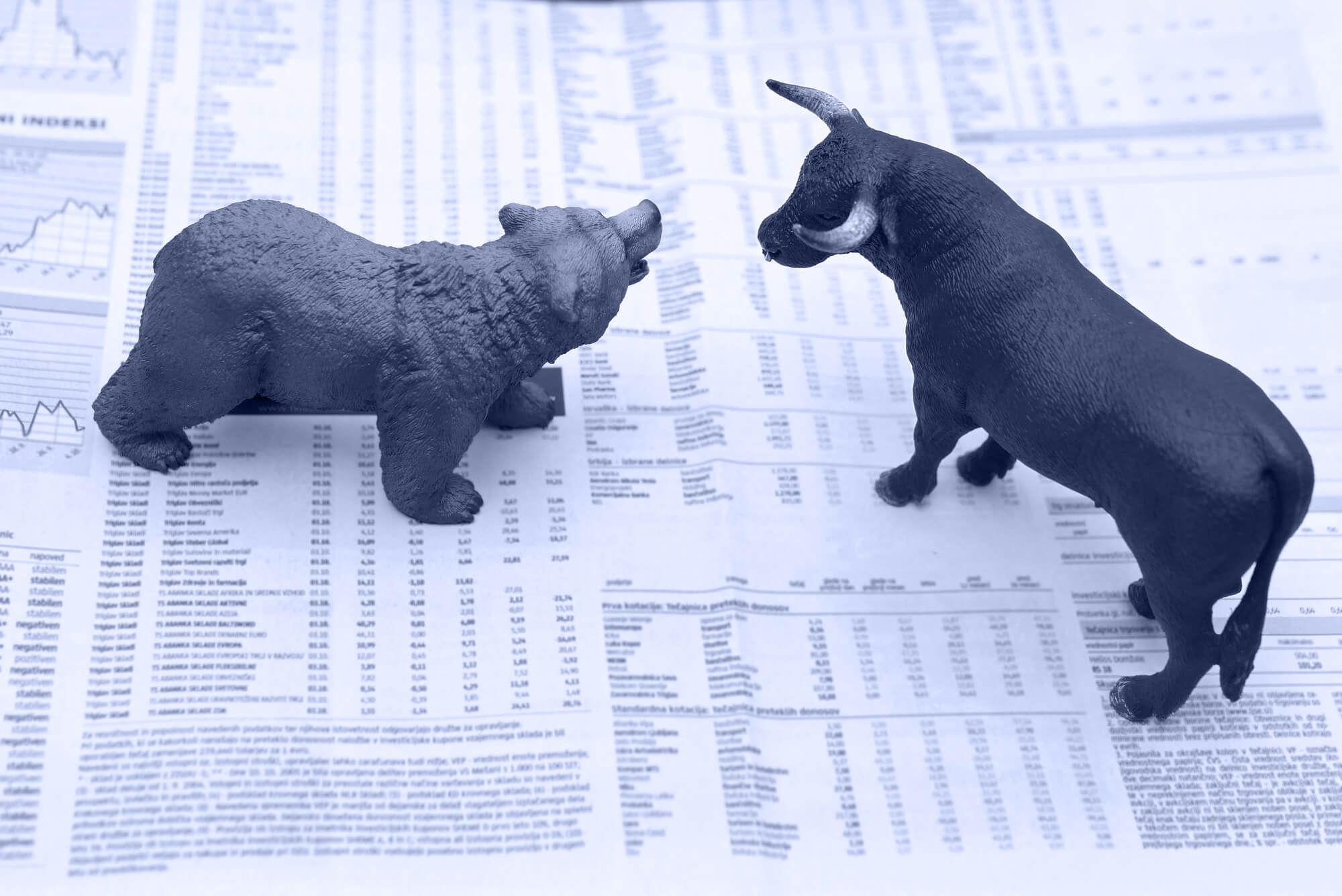Thinking about investing? It can feel like mastering a new language. Some stock market terms will initially seem unfamiliar. But the more you learn, the better you’ll be prepared to navigate today’s market. The Nasdaq provides a detailed stock market glossary that you can access online. But the following is a simple stock market dictionary that will introduce you to key concepts and terms.
How Does the Stock Market Work?
Before learning some terms, it’s important to understand the basic mechanics of the U.S. stock market. The stock market is a public marketplace where investors can buy and sell “shares” of publicly traded companies. By purchasing shares, investors gain partial ownership of the issuing company. Share prices will rise and fall with the company’s value.
Investors aim to profit from the stock market by purchasing stocks at one price and then selling when the price increases. Success demands careful research of each stock as well as an understanding of how the market fundamentally operates.
A Brief Stock Market Terms Glossary
Here’s a basic overview of common stock market terms — presented in alphabetical order for convenience.
Annual Report
An annual report provides a comprehensive overview of a company’s activities for the preceding year. Investors will gain access to financial statements and key management decisions and analyses.
Ask Price
Also known as the “offer price.” This is the lowest price that an investor is willing to pay for a stock.

Bear Market
A way of describing a market in which stock prices are trending downward. A stock or market is said to be “bearish” if prices consistently drop.
Beta
A stock’s “beta” value is a measure of its volatility compared to the rest of the market. When beta values fall below 1, it indicates lower volatility than the rest of the market. And when beta values exceed 1 it indicates higher volatility.
Blue Chip Stocks
Companies with a stable financial history and reliable track record are called “blue chip stocks.” Investors use these stocks to balance their portfolios or pursue sustained growth.
Bond
Bonds are loans that investors make to borrowers, which can be the U.S. government or a corporation. Issuers promise to repay the loan on the “maturity date,” and the interest will provide a profit.
Bull Market
A bull market occurs when the value of stocks is trending upward. Markets are said to be “bullish” when they are exhibiting strong returns or when analysts expect stocks to rise.
Capital Gains
When you make a profit from the sale of an asset (stocks, bonds, or real estate), this is known as a “capital gain.” Investors can calculate the value of a capital gain by subtracting the original purchase price from the recent selling price.
Day Trading
Day trading refers to a trading strategy in which investors buy and sell stocks within a short window of time. Some day traders only hold a position for a few hours.
Dividend
Dividends are payments that a company makes to shareholders, usually on a recurring basis. Dividends may be cash but can also be shares of additional stock.
Earnings-Per-Share (EPS)
This is a measure of a company’s profit per share of common stock. It is an important metric that indicates a company’s profitability.
Exchange
Short for “stock exchange,” this is the marketplace where stocks are bought and sold. Common examples include the NASDAQ and the New York Stock Exchange (NYSE).
Exchange-Traded Fund (ETF)
Exchange-traded funds (ETFs) are collections of stocks that can be bought and sold directly from a major stock exchange, just like you would an individual stock. This gives ETFs greater liquidity than mutual funds.
Fundamental Analysis
Fundamental analysis seeks to evaluate the value of a stock. This method relies on a range of economic data as well as quantitative factors (industry trends, changes in leadership, etc.).
Index
A market index is a segment of the overall financial market, often used as a gauge of how the market is doing as a whole. Common indexes include the Nasdaq and S&P 500.
Index Fund
A collection of stocks designed to mirror the performance of a stock market index. Index funds may seek to replicate common indexes like the S&P 500.
Initial Public Offering (IPO)
Companies can be private or public. But when a private company decides to go public, they perform an “initial public offering.” During this process, the company will be valued, and a predetermined number of shares will be sold to public investors.
Liquidity
Liquidity refers to how readily an asset can be converted into cash (without affecting the market value). High liquidity means that the asset can easily be converted into cash.
Margin
To buy “on margin” means that you borrow money (usually from a stock broker) to purchase securities. Investors use a margin account to enhance their spending power.
Margin Call
In margin trading, the lender/broker can issue a “margin call.” This requires investors to increase the equity in their margin account to meet account requirements.
Market Capitalization
Market capitalization refers to the total value of a company’s outstanding shares. You can determine this value by multiplying the current stock price by the total number of outstanding stock shares.
Moving Average
Day traders use the moving average to track changes in the average price of a stock over time. Calculating moving averages can help traders identify market trends and bullish/bearish patterns on an individual stock.
Mutual Fund
Investment funds are collections of stocks, bonds, or securities organized in one investment vehicle. In a mutual fund, multiple investors pool their money to purchase a collection of securities.
Option
Stock options are contracts sold by one person to another. These contracts grant the buyer the right (but not the obligation) to buy/sell a security at the price and date specified in the contract.
Price-to-Earnings Ratio (P/E Ratio)
A company’s price-to-earnings ratio measures its price against its per-share earnings. Investors can calculate the P/E ratio by dividing the stock price by its current earnings per share.
Preferred Stock
This type of stock gives shareholders a higher claim on assets than in common stock. Preferred stockholders are given dividends before common shareholders in the event of liquidation.
Rally
Stocks (or the whole market) can be said to “rally” when they experience a period of sustained increase in the value of a stock or a segment of the stock market. A rally can also be used to describe a reversal of a downward trend.
Return on Investment (ROI)
Investors commonly speak of the return on investment or “ROI” to measure the success of an investment. You can calculate your ROI by subtracting your initial investment from your net profit.
Risk
Risk refers to the probability of losing money in an investment. Common sources of risk include the market itself, industry trends, changes in the U.S. economy, or decisions made by the company leaders.
Short Selling
When an investor borrows a stock from another investor and then sells the stock, this is known as “short selling.” Sellers are betting that the borrowed stock will decline, which lets them buy it back at a lower price to make a profit.
Spread
Stock spreads are the difference between the bid price and the asking price of a stock. This price, therefore, represents part of the cost of trading.
Stock Split
A stock split occurs when a company increases the number of outstanding shares of stock. As a result, the value of each share decreases.
Volatility
Investors speak of volatility to describe changes in the price of a stock (or a market index) over time. High volatility means that the price changes dramatically in a short period of time.

Stay Informed With Gorilla Trades
Stay informed about the stock market by becoming a Gorilla Trades member. You’ll get exclusive access to more educational content, as well as research tools, stock picks, and more. Sign up for a free trial, and you’ll receive 30 days of free stock picks.




